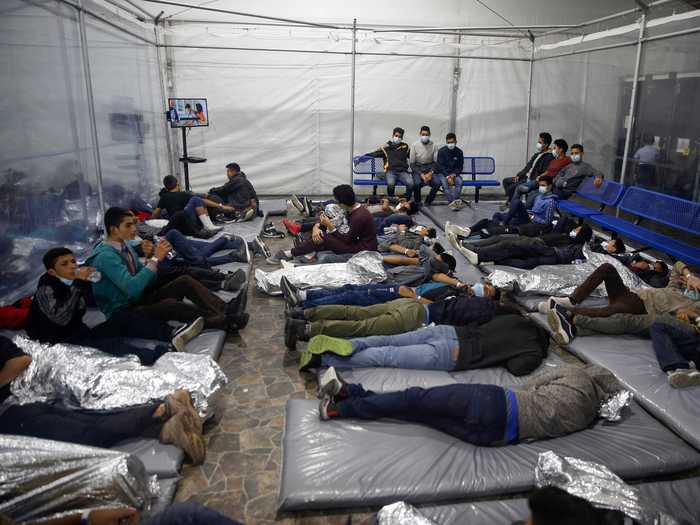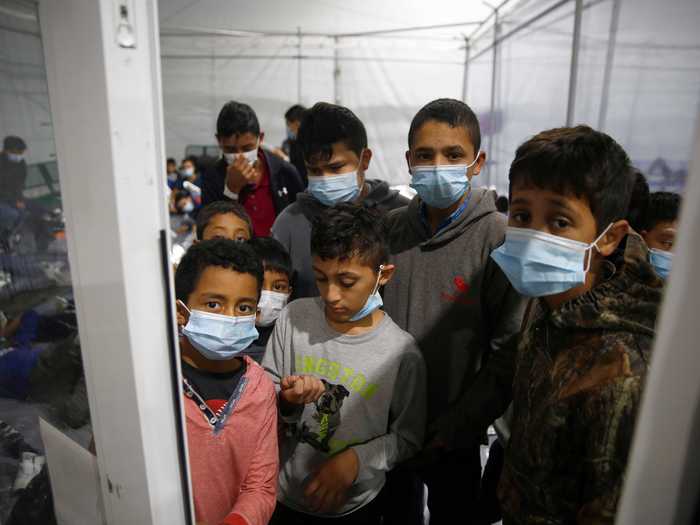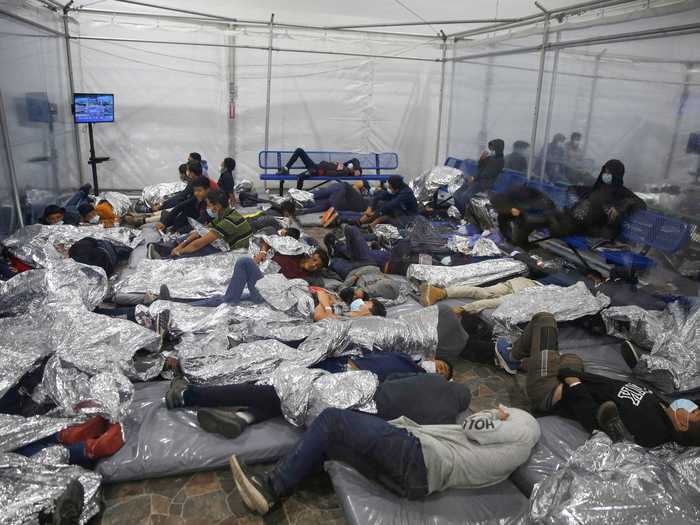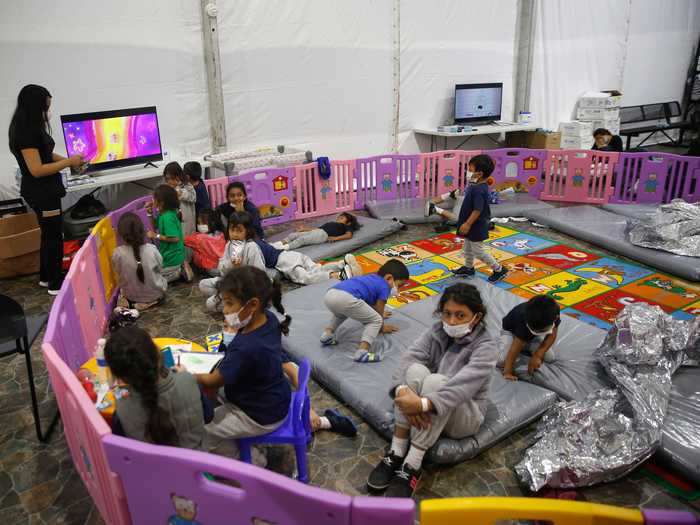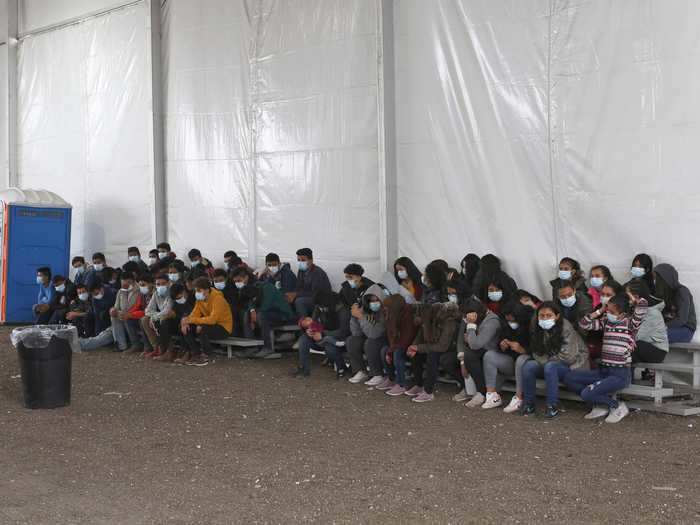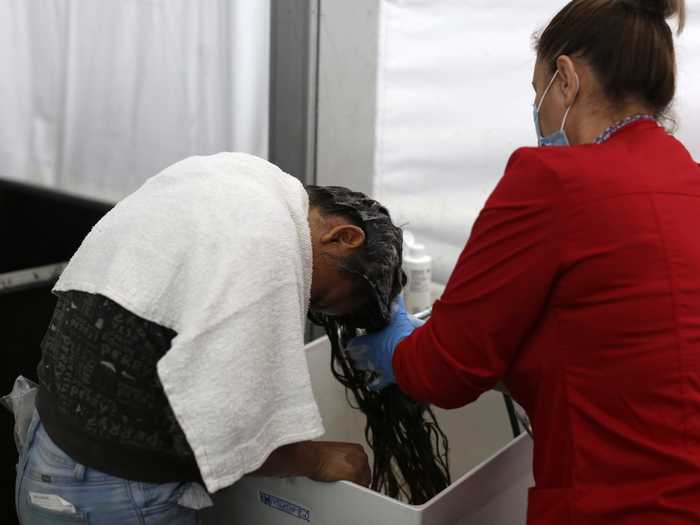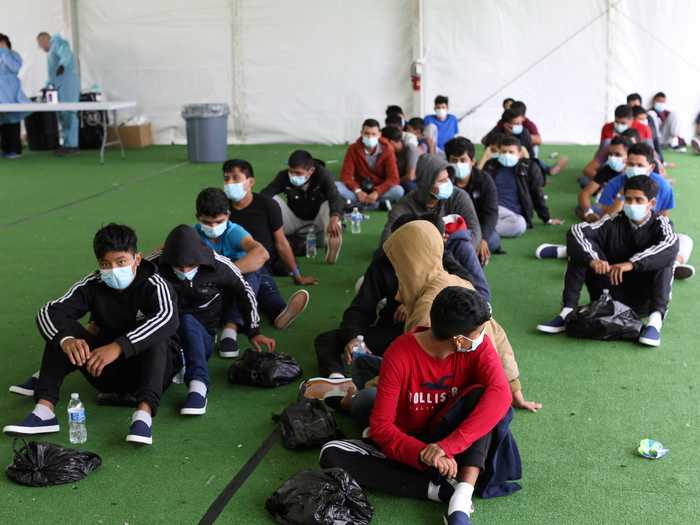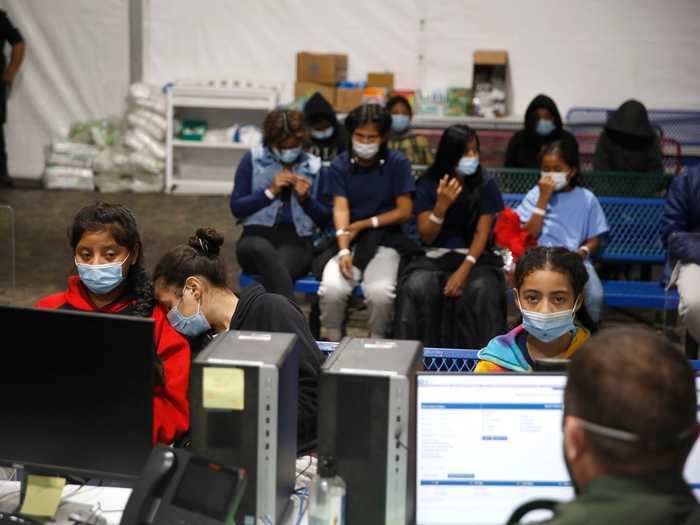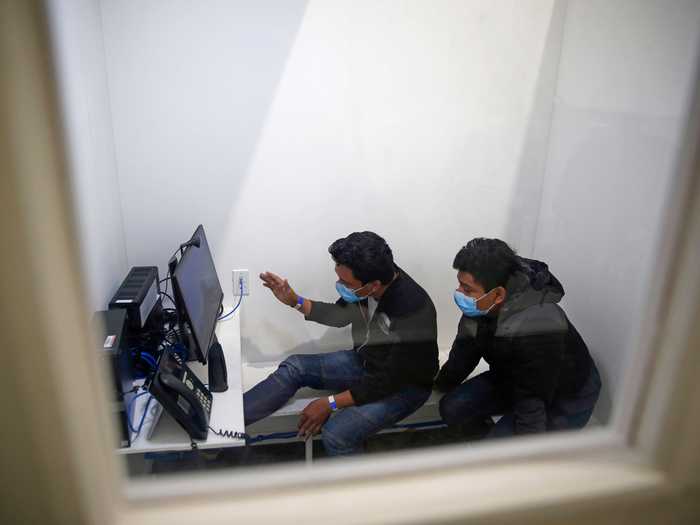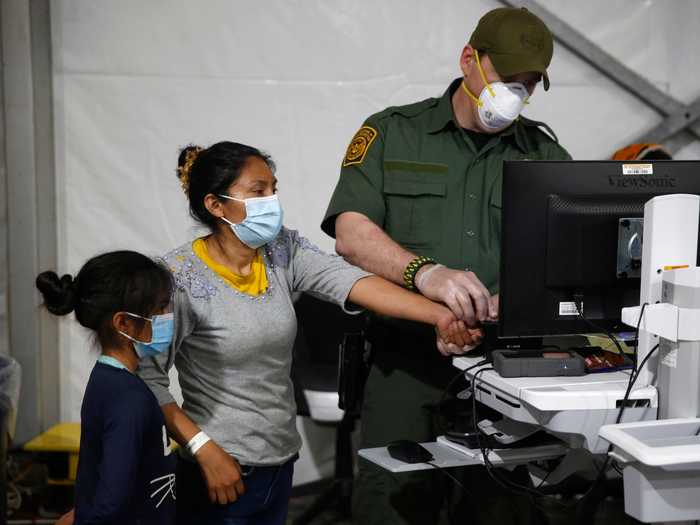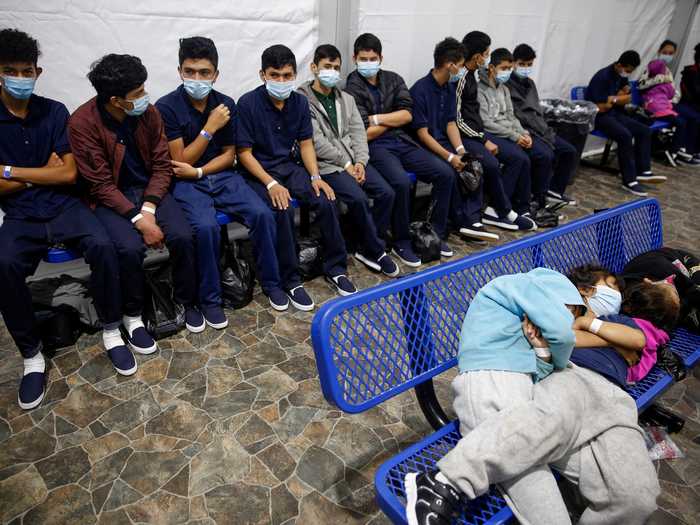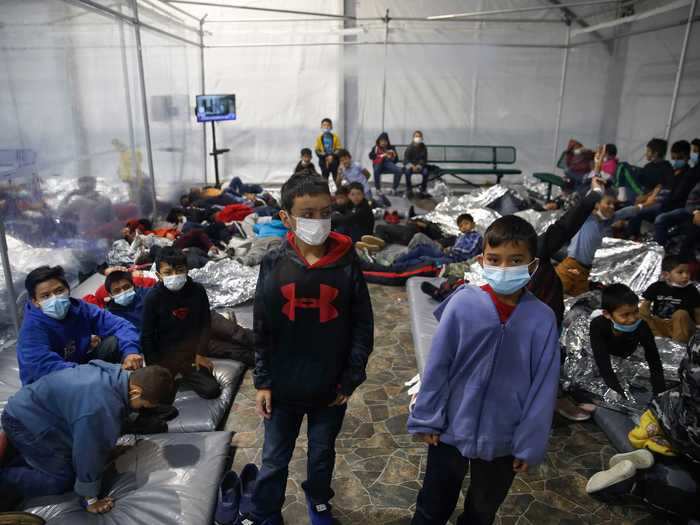Young children look out from inside a pod at the Donna Department of Homeland Security holding facility, the main detention center for unaccompanied children in the Rio Grande Valley run by the U.S. Customs and Border Protection (CBP), in Donna, Texas, Tuesday, March 30, 2021.AP Photo/Dario Lopez-Mills, Pool)
- The Biden administration allowed journalists to tour its main border facility for the first time Tuesday.
- The Texas tent facility has a capacity of 250, but more than 4,000 migrants were being held there.
- Many of the migrants are unaccompanied children, according to The Associated Press.
More than 4,000 migrants, including many children and families, are being housed in a Department of Homeland Security facility that has a capacity of 250.
Young children lie inside a pod at the Donna Department of Homeland Security holding facility, the main detention center for unaccompanied children in the Rio Grande Valley run by U.S. Customs and Border Protection, in Donna, Texas, Tuesday, March 30, 2021.
AP Photo/Dario Lopez-Mills, Pool
As thousands of migrant families and unaccompanied children have reached the US Southern border in recent weeks, President Joe Biden has faced increasing scrutiny over the administration's lack of transparency.
For the first time on Tuesday, US Customs and Border Protection allowed two journalists from The Associated Press and a crew from CBS to tour the Donna, Texas, facility in the Rio Grande Valley.
The visit revealed a "severely" overcrowded tent facility with a capacity of 250, housing more than 4,000 migrants crammed into pods, according to the AP.
Kids are being housed by the hundreds in eight small pods. Many had more than 500 kids in them.
Young children look out from inside a pod at the Donna Department of Homeland Security holding facility, the main detention center for unaccompanied children in the Rio Grande Valley run by the U.S. Customs and Border Protection (CBP), in Donna, Texas, Tuesday, March 30, 2021.
AP Photo/Dario Lopez-Mills, Pool)
Unaccompanied migrant children are processed in the tent facilities before being taken to Department of Health and Human shelters and then placed with family members or sponsors.
When journalists visited Tuesday, hundreds of kids were being housed in eight small pods about 3,200 square feet in size, the AP reported. Many reportedly had more than 500 kids in them.
US Border Patrol in the Rio Grande Valley told the AP that 250 to 300 children enter daily, but far fewer leave.
Young children rest inside a pod at the U.S. Customs and Border Protection facility, the main detention center for unaccompanied children in the Rio Grande Valley, in Donna, Texas, Tuesday, March 30, 2021.
AP Photo/Dario Lopez-Mills, Pool
The youngest children are kept in a large play pen and monitored by a caretaker.
Monitored by a caretaker, young unaccompanied migrants, aged from 3 to 9, watch television inside a playpen at the U.S. Customs and Border Protection facility.
AP Photo/Dario Lopez-Mills, Pool
Unaccompanied migrant children between the ages of 3 to 9 are kept separate from the other detainees and are housed in a small playpen with mats on the floor for sleeping, according to the AP.
When the migrants arrive at the facility, they wait to enter the intake area and be processed.
Newly migrants wait to enter the intake area at the Donna Processing Center, run by the U.S. Customs and Border Patrol (CBP).
AP Photo/Dario Lopez-Mills, Pool
They are given a health inspection and checked for lice first.
A young migrant gets treated for possible lice before entering the intake area at the U.S. Customs and Border Protection facility.
AP Photo/Dario Lopez-Mills, Pool
Their hair is hosed down and checked for lice before they enter the crowded facility. Minors are checked for scabies, fever, and other ailments, according to the AP.
Nurse practitioners also give psychological tests to the unaccompanied minors, asking if they have experienced suicidal thoughts.
The facility removes all shoelaces to avoid any harm, the outlet reported.
COVID-19 tests are only administered to those who show symptoms.
Young migrants wait to be tested for COVID-19 at the Donna Department of Homeland Security holding facility.
AP Photo/Dario Lopez-Mills, Pool
After the medical inspections, the migrants are taken to a second intake room where they receive notices to appear in immigration court.
Young migrants get processed at the intake area of the Donna Department of Homeland Security holding facility, the main detention center for unaccompanied children in the Rio Grande Valley, in Donna, Texas, Tuesday, March 30, 2021.
AP Photo/Dario Lopez-Mills, Pool
Border agents then allow the migrants to speak via phone with a US contact if they have one.
Migrants speak to their relatives inside a phone booth after being processed at the intake area.
AP Photo/Dario Lopez-Mills, Pool
Migrants older than 14 are fingerprinted and have their photos taken. Younger children do not.
A migrant and her daughter have their biometric data entered at the intake area
AP Photo/Dario Lopez-Mills, Pool
The children are given a barcoded bracelet that shows the history of their medical checks and showers.
Young unaccompanied migrants, wait for their turn at the secondary processing station inside the U.S. Customs and Border Protection facility.
AP Photo/Dario Lopez-Mills, Pool
Most of the unaccompanied minors have had long journeys to reach the border, including sections on foot, and are eager to rest.
Young children stand or sleep insides a pod at the U.S. Customs and Border Protection holding facility, the main detention center for unaccompanied children in the Rio Grande Valley, in Donna, Texas, Tuesday, March 30, 2021.
AP Photo/Dario Lopez-Mills, Pool

